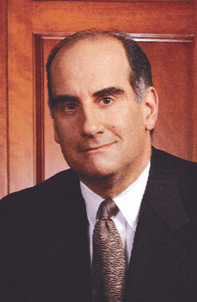By Nicholas Papain, Esq.
In the field of toxic torts, a person who is exposed to a dangerous substance may not develop symptoms of an injury or illness until years after the exposure. As a consequence, a claim is sometimes brought for what is known as “medical monitoring”. Such a claim seeks compensation for the costs of future medical examinations or tests reasonably intended to detect the onset of latent injuries or diseases caused by the exposure to toxic substances, which the claimant does not presently have but is at an increased risk of contracting in the future.
Medical monitoring may include a claim for future diagnostic tests and studies, used to timely detect and treat cancers and other diseases, preventative care, and therapy for those actually stricken with an illness.
Not all states recognize medical monitoring claims. In others, a perceived absence of clear recognition of medical monitoring claims leads defendants to challenge the rights of plaintiffs to bring them at all.
Recently, in the United States District Court for the Eastern District of New York, a judge addressed such an argument, and ruled that medical monitoring based on toxic exposure stands as an independent cause of action. Judge Arthur D. Spatt in Sorrentino v. ASN Roosevelt Center (September 29, 2008), denied a landlord’s motion to dismiss a class action complaint brought by former tenants of a luxury apartment complex located in Westbury, New York. These tenants had been notified by their landlord that they would have to vacate their premises because water intrusion and mold had been found within spaces between the walls in the Westbury Complex. The tenants needed to vacate the premises in order to do reconstruction work.
In their complaint, the tenants disputed whether their leases had been appropriately terminated. In addition, the tenants added claims for medical monitoring and violation of New York. General Business Law §349.
The landlord moved to dismiss the cause of action for medical monitoring contending that the New York Court of Appeals has never recognized an independent cause of action for medical monitoring, and that such a claim may only be asserted in the form of a remedy. Further, the landlord argued that even if a cause of action for medical monitoring could be maintained, the tenants had failed to allege an actionable toxic exposure.
The tenants had alleged in their complaint that the landlord caused all potential class members reasonable apprehension of a serious illness attributable to living in apartments infested with mold and/or elevated levels of bacteria. Further, the tenants claimed that as a direct and proximate result of the negligence of the defendants, they would need ongoing diagnostic, curative and preventative medical care because of their potential exposure to toxic mold.
Judge Spatt determined that “[a]lthough the New York Court of Appeals has never expressly recognized an independent cause of action for medical monitoring, the Court disagrees with the defendants’ contention that the courts of the Appellate Division have not done so.” Judge Spatt added that “the federal courts in this district have found that ‘in cases involving exposure to toxic materials, the New York Court of Appeals would recognize an independent cause of action for medical monitoring.’ Abbatiello v. Monsanto Co., 522 F. Supp. 2d 524, 538 (S.D.N.Y. 2007) (collecting cases arriving at the same conclusion).”
Further, the Court found that the tenants had properly alleged an actionable exposure to a toxic substance by establishing both exposure to the disease-causing agent and that there was a “rational basis” for their fear of contracting the disease. Citing to New York authority, the Court stated that this “rational basis” has been construed to mean the clinically demonstrable presence of the toxic substance in the plaintiff’s body, or some indication of toxin-induced disease, i.e., some physical manifestation of toxic contamination. The landlord did not dispute that exposure to mold can result in serious health effects. Further, the Amended Complaint contained sufficient allegations that the mold caused by water-infiltration was detected in and around the occupied spaces in the Westbury Complex. Finally, the tenants alleged that at least some of those exposed to the conditions at the Westbury Complex have developed exposure-related health conditions. Accordingly, the Court found that the tenants had stated a rational basis for exposure to a disease-causing agent and there was a rational basis for their fear of contracting the disease. Therefore, the Court denied the motion to dismiss the medical monitoring claim.
The tenants’ case will now proceed into what is known as the “discovery” phase of litigation, in which the parties have the opportunity to investigate the facts supporting the claims and defenses at issue.
By Nicholas Papain, Esq. New York Personal Injury Lawyer concentrates his practice in personal injury, negligence, premises liability, and products liability litigation.







